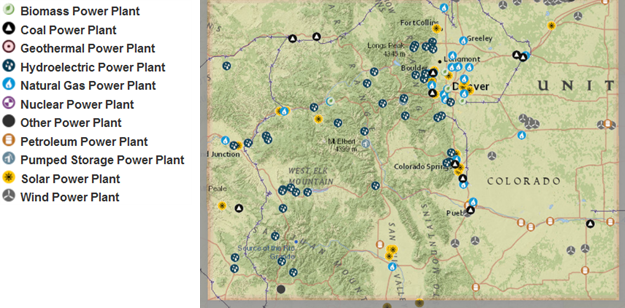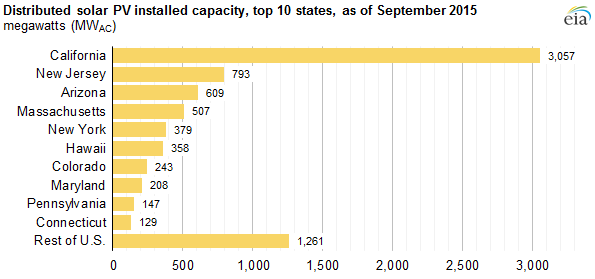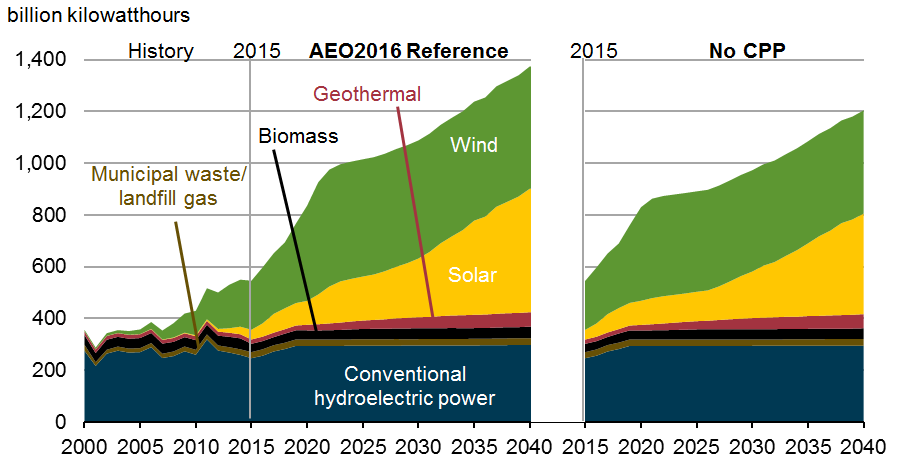Top Five Sources for Solar Data Available at EIA
July 8, 2016 by Cara Marcy
Have you ever searched for solar energy data and didn’t know where to begin? Maps of solar power plants, installed solar capacity growth over time, projections for solar growth—this kind of information can be valuable to state policymakers trying to understand their solar landscape and craft policies to meet jurisdictional energy goals. One source policymakers can turn to for information about all energy sources, including solar, is the U.S. Energy Information Administration (EIA).
The EIA is an independent, non-partisan information agency that collects comprehensive U.S. energy data and prepares analyses, market forecasts, and long-term outlooks. EIA surveys a number of energy market participants, including power plants, generating units and utilities, which are then used to aggregate up to state and national estimates. Users can access energy information for free in a variety of formats (e.g. reports, maps, web products, data browsers, etc.)
The wealth of EIA energy data can be overwhelming to first-time and experienced users alike. To help state policymakers navigate valuable resources, the top five sources for solar data available at EIA are highlighted, including:
- State Energy Data System (SEDS)
- Electricity: Summary data, annual and monthly
- Electricity Data Surveys
- Annual Energy Outlook
- Daily short publications on recent data trends
1. EIA’s State Energy Data System (SEDS)
“In 2014, Colorado’s grid-connected solar photovoltaic capacity of 430 megawatts was the ninth largest in the United States, and the state obtained nearly 10 times as much net generation from solar power as it did just 5 years earlier in 2009.”
Learn this and other interesting facts about your state at EIA’s State Energy Data System (SEDS). The SEDS database contains quick facts (like the one above), maps (like the one below), rankings, and a wide variety of state specific data.
Quick tabs provide information about consumption by source/sector, energy production, renewable and alternative fuels, electricity generation, and prices within your state.
Source: U.S. Energy Information Administration, 2015, “Colorado Profile Overview”, State Energy Data System, http://www.eia.gov/state/?sid=CO
2. Electricity: Summary data, annual and monthly
Summary data (which can be filtered by state, sector, source, etc.) can be found in the Electric Power Annual, or via the “Electricity” dropdown under “Sources and Uses” on EIA’s homepage.
If you need more recent or monthly data, check out the Electric Power Monthly datasets, including the Net Generation by State by Type of Producer by Energy Source dataset. If you just need to make a quick figure, try using EIA’s Electricity Data Browser.
*EIA now captures monthly distributed solar PV data by state.* EIA recently started publishing estimates of power generation from small scale solar installations in the U.S., by state and by sector, as this article explains.
Source: U.S. Energy Information Administration, 2015, “EIA electricity data now include estimated small-scale solar PV capacity and generation”, Today in Energy, http://www.eia.gov/todayinenergy/detail.cfm?id=23972
3. EIA Electricity Data Surveys
If you are looking for the details behind the numbers or are just interested in a specific power plant or utility, then download detailed survey data files. The three most common surveys for electricity data are:
- Electric Generators Survey: EIA-860, Annual Electric Generator Report; EIA-860M, Monthly Update to Annual Electric Generator Report: collects data on the status of existing and planned electric generating plants (at 1 megawatt or greater) and associated equipment.
- Power Plant Survey: EIA-861, Annual Electric Power Industry Report (and the Short Form); EIA-826, Monthly Electric Utility Sales and Revenue Report with State Distributions (monthly version of the EIA-861): Collects data on electric power sales, revenue, and energy efficiency on the electric power industry participants involved in the generation, transmission, and distribution, including data on distributed solar and net metering.
- Utility Survey: EIA-923, Power Plant Operations Report: collects data from power plants on electric power generation, energy source consumption.
4. Annual Energy Outlook publication: Future projections
EIA produces an annual report, the Annual Energy Outlook (AEO), which makes projections on the future of the energy sector. EIA reference case projections are based on current laws and policies at the time projections are developed, while the suite of different scenarios account for uncertainty in baseline input assumptions and long-term U.S. energy policies.
The AEO makes projections for both the utility-scale and distributed generation solar markets out to 2040. An interactive table viewer allows users to find data from a specific projection. The AEO2016 Early Release is currently available and has energy projections for a future with and without the impacts of the Clean Power Plan. The full report will be released in late summer of 2016.
Renewable electricity generation by fuel type
Source: U.S. Energy Information Administration, 2016, Annual Energy Outlook 2016, http://www.eia.gov/forecasts/aeo/er/pdf/0383er(2016).pdf
Month to Month projections: if you are interested in a more detailed month-by-month outlook over the next couple of years, visit EIA’s short term energy outlook.
5. Daily short publications on recent data trends
Today in Energy, updated daily, keeps up with the latest energy data trends, such as this recent publication: Solar, natural gas, wind make up most 2016 generation additions.
Source: U.S. Energy Information Administration, 2016, “Solar, natural gas, wind make up most 2016 generation additions,” Today in Energy, http://www.eia.gov/todayinenergy/detail.cfm?id=25172
Sign up here to subscribe to get updates on the articles and data that matter most to you.
What’s new?
Other data projects that EIA is currently working on to enhance the collection and presentation of data related to renewable energy include:
- Given the preponderance of third party ownership models for distributed solar, information about these third-party owners was added in 2015 to the monthly reporting on the Form EIA-826 in order to better estimate the overall market size (expressed in sales) of distributed solar.
- Beta testing of new, near real-time collection and presentation for hourly electricity operating data (demand, net generation and interchange) from all balancing authorities (an entity that is responsible for certain operations of the grid) in the lower 48 states (EIA-930).
- Clearance from the Office of Management and Budget for survey improvements will occur in 2017; EIA plans to make changes to improve solar related survey data. Click here to view tentative schedules and changes to the forms that are currently under consideration.
- EIA is redesigning its solar industry survey (Form EIA-63b) to capture critical industry data from top U.S. solar PV manufacturers.
Cara Marcy, a renewable energy analyst at EIA, recently completed a 6-month exchange at the National Renewable Energy Laboratory (NREL). In this blog, she summarizes some of EIA’s data and analysis products that may be most useful for state and local policy makers making critical solar energy decisions.Cara Marcy, Renewable Electricity Analyst cara.marcy@eia.gov
For additional information contact:
Cara Marcy, Renewable Electricity Analyst
Share





